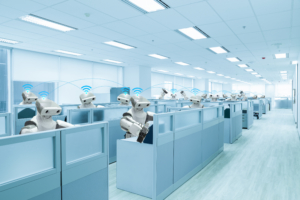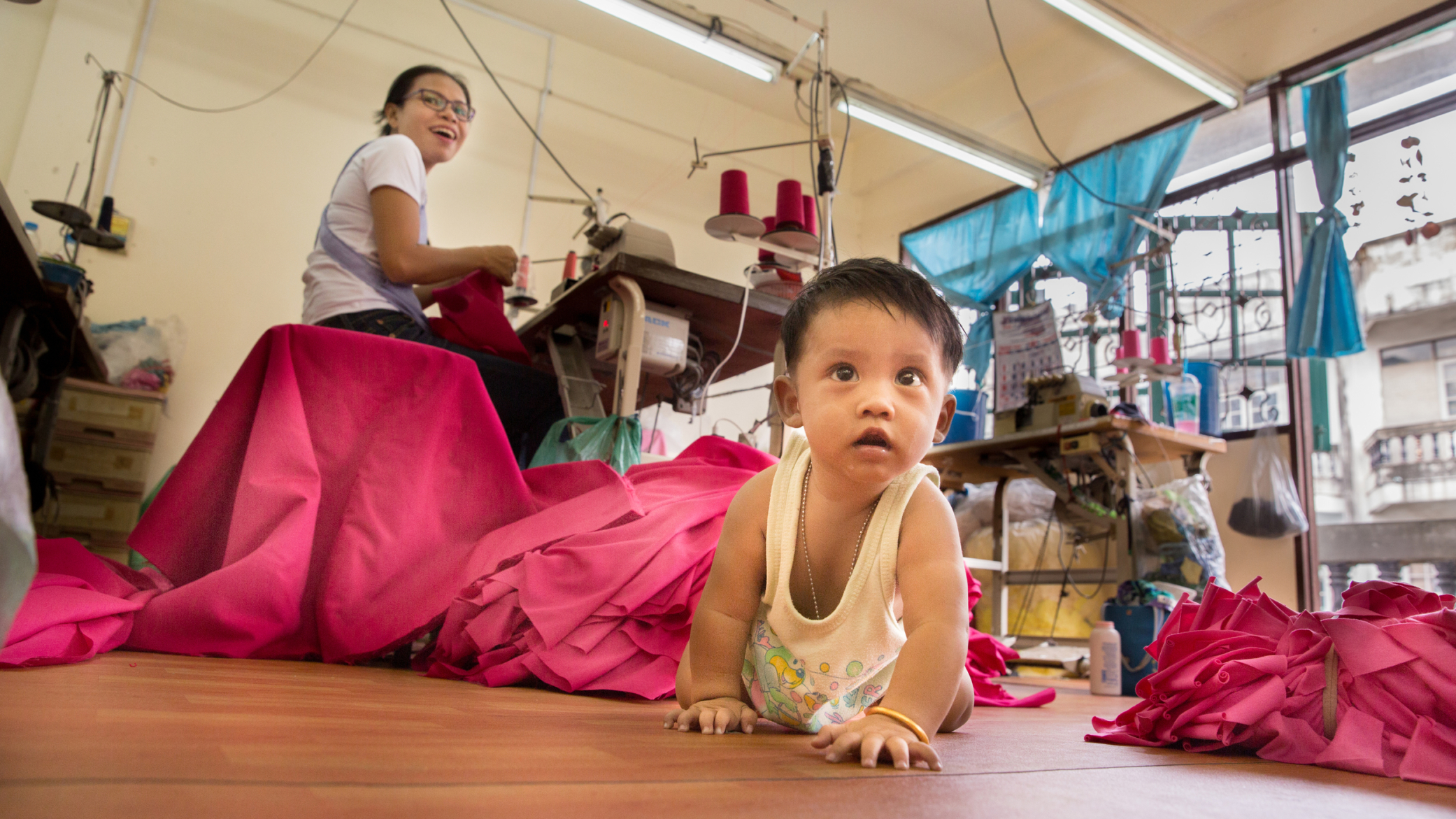Robots. The gig economy. Artificial intelligence. Youth unemployment. Demography, open borders, schooling based on last century’s needs, and universal basic income. If I had you at “robots,” then you might be one of the thousands of people in think tanks, international agencies, global consulting firms, private foundations, and tech giants focusing your intellectual energies on trying to figure out the future of work. I’m here to ask: What’s missing from the story you’ve been telling?
Technology, along with globalized trade and labor markets, have already disrupted the quantity and type of jobs available — and the pace of change is picking up. Old models of skills acquisition and employment don’t work in today’s market, and it’s quite clear that they will be even less suited for the future. This means lots of worker dislocation, mismatch, and underemployment — a phenomenon that is terrible for both individuals and societies.

Along with the impending gloom is a glimmer of utopian dreams. Robots can do the drudgery, machines will learn so we don’t have to, and we’ll all live on money dropped into our mobile bank accounts, without a commute or a boss.
Given the disruptions in the nature of employment, it’s not surprising that we’re awash in “future of work” initiatives. Here’s a small sample: the International Labor Organization has started a Future of Work Global Commission; the World Bank’s next world development report will be on the “Changing Nature of Work”; Melinda Gates is co-chairing a Pathways for Prosperity Commission on Technology and Inclusive Development; Deloitte, PWC, and KPMG have all issued reports on the future of work; the New America Foundation and Bloomberg developed a year-long study of the future of work in America; the Brookings Blum Roundtable focused on the future of work in the developing world; and the Open Society Foundations, the Ford Foundation, and any number of U.S. and European think tanks have focus areas around the future of work.
With all the brainpower being devoted to hard questions about changes in the relationship among productivity, human labor, and income, you’d think the analysts would be leaving no stone unturned. But in much of the efforts to date, the future of work field has systematically ignored or minimized the importance of two crucial facts. And those oversights threaten to lead us all to the wrong conclusions about what the future might look like, and how we might act today to brighten our prospects.
Fact 1: Every future worker has a mom
Robots aside, workers in 15 to 30 years are children, babies, and glints in the eye today; who they will be as adults depends very much on their mother’s life, experience, and ability to support and care for them. Indeed, the skills, adaptability, and grit of future workers will have far more to do with mothering than with schooling. And, across countries in the north as well as the south, we’re doing too little to understand that relationship, and to invest today in the people who are creating tomorrow’s workers.
Future workers are being borne to, and raised by, today’s young women — women who are often playing the role not only of caretaker but also of breadwinner. In most societies, mothers bear the primary responsibility for caring for babies, getting the kids fed and to school every day, and nursing them when they fall ill. From a societal perspective, all of that is an investment in the future labor force. More than that, it is usually the moms who are expected to instill in their children the “soft skills” of empathy, teamwork, and personal discipline — characteristics that are expected to be highly valued in future workers. Mothers are doing all this today while juggling work that doesn’t pay enough with childcare that costs too much.
Future of work analysts habitually forget about the most fundamental tasks involved in shaping the next generation of workers — and who’s doing them. Most discussions of the future of work assume that future workers — or those who will be displaced and have to turn into future entrepreneurs — are materializing out of thin air.
The earliest sighting of a future worker in most future of work reports is in primary school, where (we are told) they learn old facts in old ways and will end up unprepared for the labor market a decade or more from now. At best (and too rarely), a future of work exercise will tackle childcare, but I have yet to see one that starts with actions to make moms and young children healthier, safer, and more secure today.
Fact 2: Gender-based differences will shape the future labor market
If there’s one thing we know about the labor market, regardless of geography or era, it is that male and female workers have different experiences. At any given moment, women are concentrated in different occupations than men. Women are more likely to work part-time, and enter and leave employment as demands at home change. Women end up doing informal work more than men because they value flexibility and have fewer opportunities for formal employment. And that’s only a fraction of gender-specific differences at work.
With new technology and ways of working, those gender-related differences don’t disappear, but they do change. For instance, when tractors are brought to farms and the acreage under cultivation increases, agriculture becomes the province of male workers. When robots are brought onto the floor of a garment factory, young female seamstresses lose their jobs to young men behind control panels. Women tend to be hired for the frontlines of childcare and eldercare; as the market for those services becomes more profitable, it is often men who create the businesses that employ the female caregivers. So if we look at labor market trends without looking separately at the experiences of men and women, the result will be uninformative at best and probably misleading.
Gender-blind analysis is precisely what most future of work exercises have done. I’ve read the descriptions of the scope of many future of work commissions, and a lot of future of work reports. Gender is often left out altogether; occasionally there are passing references to women, particularly in the context of eldercare, and sometimes a graph or two will show separate labor force participation data for men and women.
Both the International Labor Organization and the Russell Sage Foundation deserve credit for doing more than most to tackle gender issues, and the University of Melbourne has put out useful publications. But as a whole the future of work efforts simply do not integrate gender in a meaningful way — and it is a glaring omission. (Don’t believe me? Just search any future of work document for “gender,” “men,” “women,” “male,” and “female,” and you’ll see what I mean.)
Let me play out what a gender-sensitive future of work analysis might look like. It would project the supply of labor separately for men and women, taking into consideration what we already know about the factors that drive education, vocational training, and how much time people dedicate to paid and unpaid work. It would look at how gender-sensitive economic, labor, social protection, and education policies might better prepare women as well as men for the workplace of the future. On the demand side, it would carefully consider how the technological and other shifts in the workplace are likely to affect (and be affected by) occupational segregation through gender, and what might be done through public policy and private investment to lessen the earnings, pension, and other gaps between male and female workers.
It would also pay a lot of attention to the gender dimensions of the care economy, which because of the aging of the world’s population is guaranteed to grow dramatically. As demand for care workers increases, will women continue to do that work, or will the work itself be altered in ways that make it more attractive to male workers?
The analyses would confront the question of what happens to society when, in a world in which overall demand for labor is not keeping up with population growth, men and women are competing for the same jobs. And, if the study includes a look at the potential of universal basic income, it would bring in an understanding of gender-based differences in consumption and savings. Those are just some of the ways in which integrating consideration of gender into the story of the future of work would make it richer and more useful.
I applaud the intellectual energy and funding going into understanding what sort of economy the next generation will face — and how we can take steps today to mitigate some of the risks of a world where productivity is disconnected from human labor. But I’m worried that we’re forgetting where the future workers really come from, and ignoring some of the most important features of the labor market. What will it take for those who are studying future of work to tell the whole story?



